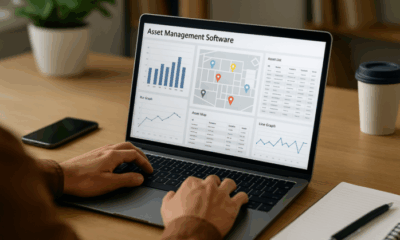Success Advice
2 Secret Roads to Success – Why Some People Have It All and How You Can Too

Have you wondered how some people seem to have it all – the 6-figure pay check, a healthy and fit body and amazing relationships? On the other hand, others are successful in one aspect of our lives (perhaps we are happy with our careers) but there’s always something that’s missing – that strong body, that perfect someone or living a meaningful life.
I’ve personally experienced having a successful career but failed at having a healthy and strong body. When I finally succeeded at getting and staying healthy, I realized that there are two completely different approaches, both of which need to be mastered to find success in life – the goal-driven approach and the process-driven approach.
The Goal-Driven Approach
A goal-driven approach is one in which our goals themselves, are sufficient to motivate us to act until we achieve them. This works well for:
- Short-term goals lasting a few days or a few weeks, where we can see the end in sight and push ourselves to get there.
- Goals that are usually within or just outside our comfort zone.
- Goals that have some certainty of success at the end. For example, working overnight and acing the client presentation the next morning makes us feel proud of our achievement and gets us recognition from our boss.
This approach inherently rewards speed, agility and short bursts of intense work. We end up relying on quick wins or successes which make the task worth it and help us feel motivated to achieve our goals.
Most of us are very adept at using this approach because we’ve grown up in environments, traditional education and companies, which operate this way. Schools and universities set exams and corporate jobs require us to complete tasks upon which we get good grades or promotions.
When the Goal-Driven Approach Doesn’t Work
What a goal-driven approach doesn’t teach us though is how to approach long-term goals like staying healthy, having meaningful relationships or building our careers around our purpose in life.
- These goals are usually so big and so long-term that we don’t fully understand all the steps to reach them.
- They don’t have any immediate reward associated with them so our motivation to chase them decreases after the initial burst of inspiration. For example, it’s impossible to lose weight and keep it off by just eating healthy for a week.
- Because they are so long-term, any future action of ours can completely wipe out the gains made in the beginning of the process which is even more de-motivating. For example, a week of eating healthy can be wiped out by one night of bingeing.
- There is also no artificial sense of urgency like deadlines -so we need to find the motivation internally to engage in the task every day. If we ever try to impose timelines on these tasks, it only stresses us out and we compensate by completely sabotaging ourselves like eating an entire pack of cookies one fine night exhausted from a week of eating too little.
“If you don’t know where you are going, you might wind up someplace else.” – Yogi Berra
The Process-Driven Approach
The process-driven approach breaks down our big goals into minute goals and creates a habit to execute these minute goals regularly.
Putting such a habit into place is simple. Just follow these four steps:
- Break down your big vision into multiple long-term goals all of which have to work together to make your big vision come true. For example, for your big goal of feeling healthy and fit, you may break it down into eating healthier, exercising regularly and sleeping more.
- Pick one of the goals to focus on, ideally the one you think will have the biggest payoff.
- Break this goal down into a series of simple activities that you can do without much effort. For example, let’s say you picked eating healthier as your priority goal. One of the activities that might be sabotaging you is your regular McDonald’s dinner on the way back from work. A simple activity that can replace this is to stop driving by McDonald’s if it’s triggering your craving and take a different route back home instead. This might take a little bit of willpower on the first day but as you get used to the new route over a couple of weeks, it’ll become an automatic habit.
- Once the first activity feels like a normal part of your day, stack on the second activity and so on. Similarly, once you’ve achieved the first goal, stack on the second, third and remaining goals to reach your long-term vision.
How to Succeed with the Process-Driven Approach
Though this seems simple in theory, there are two emotional and mindset changes needed to succeed with this method.
The first is to be patient – instead of focusing on the big shiny dream, measure progress against the habit that you’re trying to cultivate. Accept that seeing the big vision come true takes months and sometimes years. Our biggest Achilles heel is impatience and while this works well in academia and work, it backfires in building health and relationships because we end up taking short cuts that harm us long term.
The second is to build rewards into your process – Having rewards is the best way to motivate ourselves and makes our mini-habits easier to stick to. For example, if you don’t eat at McDonald’s then your reward could be having a spa massage at the end of the week.
“Nothing can stop the man with the right mental attitude from achieving his goal; nothing on earth can help the man with the wrong mental attitude.” – Thomas Jefferson
Find The Right Balance
At the end of the day, we need to master both goal-driven and process-driven approaches to succeed. Use the goal-driven approach for short-term goals or when you need a burst of energy to push you through a task. Use the process-driven approach for long-term lifestyle change journeys such as getting healthier, having more meaningful relationships or pursuing a career that resonates with your purpose in life. In this way, you too can soon be the person who seems to magically “have it all”.
What are you doing today to reach success later on? Let us know your tips in the comments below!
Entrepreneurs
The Essential Skills Every Entrepreneur Needs In 2026
Success in the digital age isn’t about luck. It’s about mastering the skills that separate dreamers from doers.

When I was 22 years old, I started my first side hustle as a ghostwriter. (more…)
Did You Know
The Success Patterns You Inherited (And Didn’t Notice)
Your family history may hold the key to why you think, act, and feel the way you do today.

Who are you? Your experiences and your family’s narratives and legacies contribute to your identity. Your ancestry contains individual traits and forces that have been inherited over the years. It also carries the fights and victories of your forebears and older family members. (more…)
Shift Your Mindset
11 E’s That Define Every Great Leader And Why Most People Miss Them
If you’ve ever felt the pull to lead, this is your roadmap to turning inner potential into lasting influence.

What Is Leadership, Really?
Leadership is far more than a title or position. It’s the ability to envision a future, inspire others, and align people toward a shared goal. (more…)
Personal Development
This Silent Habit Might Be Sabotaging Your Career
Your temper might be costing you more at work than you realize. Here’s why it matters.

You may be the last to know that you’re walking around with a giant chip on your shoulder. Meanwhile, your coworkers are giving you a wide berth. (more…)
-

 Life4 weeks ago
Life4 weeks ago9 Harsh Truths Every Young Man Must Face to Succeed in the Modern World
-

 Success Advice3 weeks ago
Success Advice3 weeks agoInside the TikTok Resume Hack That’s Fooling Recruiters (For Now)
-

 Change Your Mindset3 weeks ago
Change Your Mindset3 weeks agoThe One Leadership Habit That Separates the Great From the Forgettable
-

 Personal Development2 weeks ago
Personal Development2 weeks agoThis Silent Habit Might Be Sabotaging Your Career
-

 Business2 weeks ago
Business2 weeks agoWhy Your E-Commerce Fulfilment Is Probably Broken (And How to Fix It)
-

 Shift Your Mindset1 week ago
Shift Your Mindset1 week ago11 E’s That Define Every Great Leader And Why Most People Miss Them
-

 Did You Know7 days ago
Did You Know7 days agoThe Success Patterns You Inherited (And Didn’t Notice)
-

 Business1 week ago
Business1 week agoThe Hidden Money Pit in Your Operations (and How to Use It)


























1 Comment